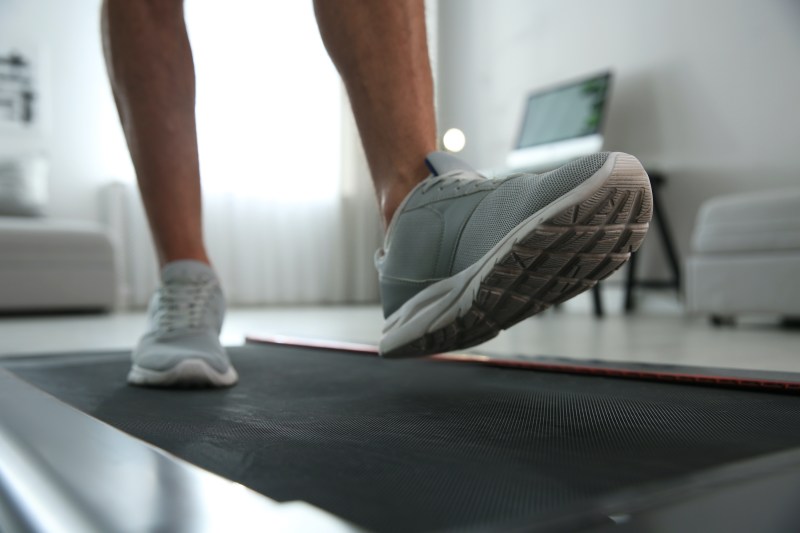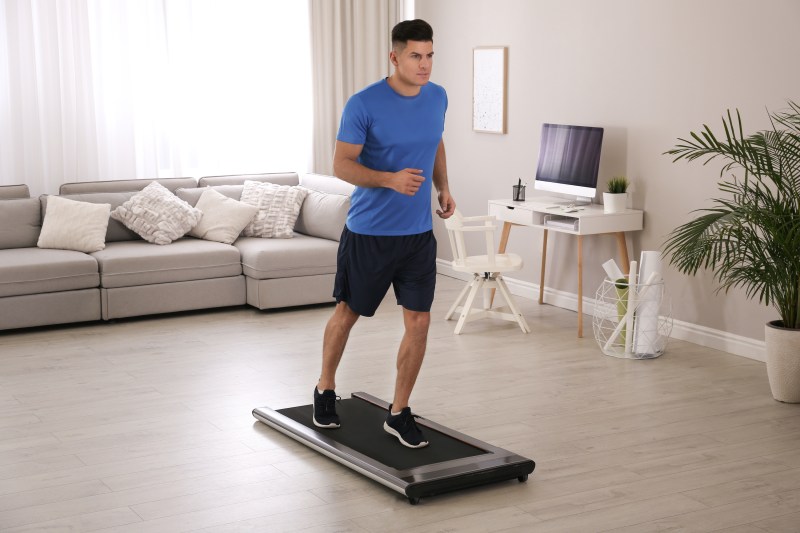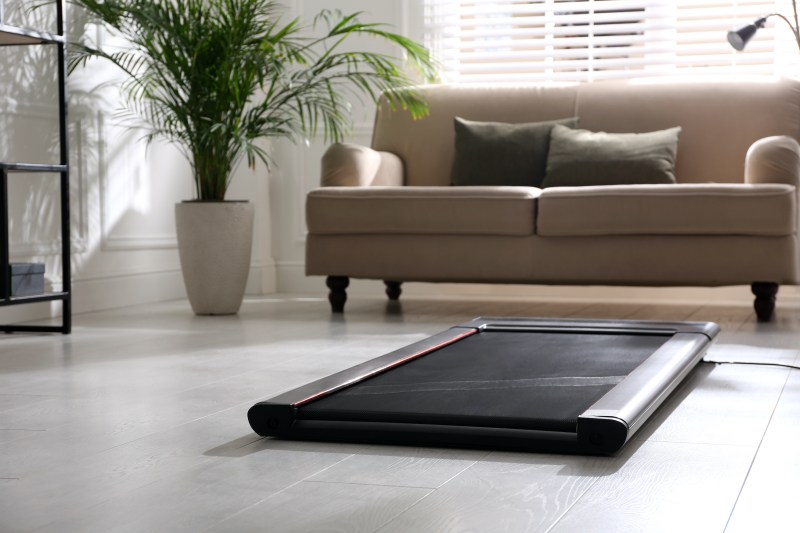
For several years now, many health-centric companies have offered standing desks and workstations for employees. Standing desks have gained popularity in recent years thanks to their many health benefits, such as improved posture and reducing the risk of chronic back pain. Taking a similar, yet slightly different approach, is TikTok’s latest trend – a walking pad. A walking pad, also known as a walking workstation, combines a treadmill with a desk to help you get your daily steps in while you work.
This new standing desk alternative is great for people who work desk jobs to improve their cardiovascular health. But how exactly does a walking pad differ from a traditional treadmill, and do you need one? This guide will break down everything you need to know about the recent rise in popularity of this fitness product and the pros and cons to consider about buying one.
@bringingbalancedback Gimme all your walking pad questions!! #walkingpad #walkingpadathome #fatlossworkout
The recent popularity of the walking pad
In 2023, the walking pad gained serious popularity, thanks to TikTokers sharing their experience with social media followers. This trend, along with the popular 12-3-30 workout, has been shared all over TikTok, especially amongst work-from-home employees. Unlike a traditional treadmill which is often a bulky device, the slim and compact design of a walking pad allows it to easily fit under a desk or workstation. Most walking pads have a shortened deck compared to a treadmill, ideal for walking at slow paces while still efficiently working on a computer.

Origins of the walking pad
Today, there are several brands selling walking pads designed to fit under desks. While the general term walking pad applies to the general fitness concept, a popular brand known as WalkingPad is a big player in the industry. Offering a number of different models under the brand name, this company’s products are often talked about on TikTok by

Pros of a walking pad treadmill
Once you understand the concept of a walking pad treadmill, it’s easy to see why so many people love it.
- Portable. The compact and foldable nature of walking pads makes them easy to move around, ideal for employees looking to fit cardio exercise into a busy workday schedule.
- Multifunctional. Instead of sitting for hours on end, employees can walk at a slow and steady pace while working. Not only does this multi-tasking approach help enhance productivity, but it offers a steady calorie burn throughout the workday. Although weight loss may attract some to purchase a walking pad, the increase in daily movement by using a walking pad can benefit nearly everyone.
- Boosts productivity. Some social media influencers who love their walking pad also note that using a walking pad throughout the workday can be helpful in maintaining energy levels throughout the day. If you’ve experienced that 2 to 3 p.m. slump, a walking pad might be just what you need to get an energy boost. In addition, the constant steady pace of walking on a pad also helps to enhance blood circulation throughout the body, thereby reducing the risk of blood clots.
- Great for small spaces. A walking pad treadmill is also a great option for small studio apartments or tight rooms that cannot accommodate the space needed for a full-size treadmill.
By using a walking pad under desk, you can help reduce the risk of chronic diseases associated with a sedentary lifestyle. Plus, many people have found that standing and moving help them accomplish more throughout the workday.

Cons of a walking pad treadmill
Although a walking pad is a great option for many, there are also quite a few drawbacks worth considering before purchasing.
- Walking pads don’t work for all types of WFH jobs. Walking pad treadmills are ideal for tasks such as typing on a computer or answering phone calls, but may not be ideal for specific tasks such as drawing or reading. Before you buy a walking pad for under your desk, consider the nature of your job and its duties.
- You may need time to adjust or may find it distracting. Using a walking pad treadmill may also require an adjustment period, as most of us are not used to working while physically moving. Some people may easily adapt to working while moving, while others may find the process to be distracting.
- It’s not right for people with certain medical conditions. People with certain medical conditions, such as vertigo, or who are prone to motion sickness may find it too difficult to work while walking.
- The cost. Another obvious drawback of the walking pad treadmill is its hefty price. For employees with long-term work-from-home schedules or hybrid schedules, a walking pad is a great investment. However, for people who do not work from home often, a walking pad may simply be too expensive. Of course, some workplaces may even allow employees to utilize a walking pad while in the office too.
The price of walking pads can vary depending on brand and model, mostly ranging between $400 and $1000. As part of employee wellness initiatives, some companies may offer walking pads to employees to help encourage self-care and cardiovascular wellness.
Should you buy a walking pad?
Deciding to purchase a walking pad is a personal decision, which will vary depending on your work situation and use. If you’re looking to enhance your cardiovascular health and get those daily steps in, a walking pad treadmill might be perfect for your needs and help you enhance your physical fitness. On the other hand, a walking pad certainly isn’t for everyone, and the drawbacks should be considered too.



